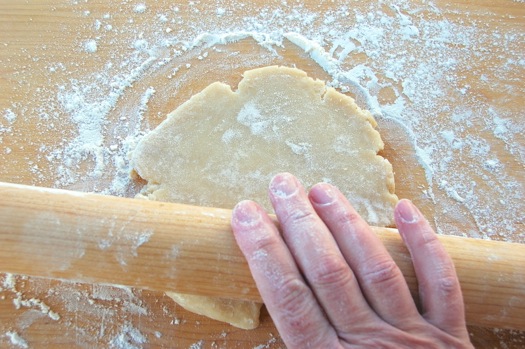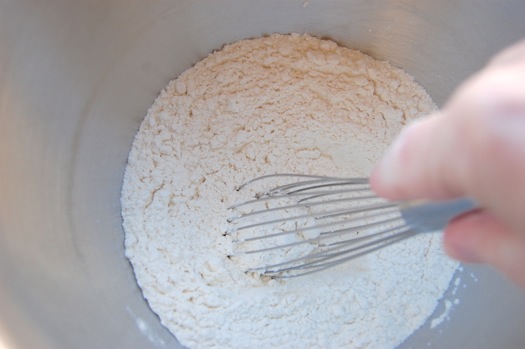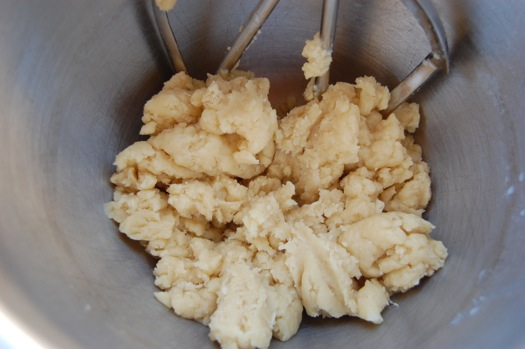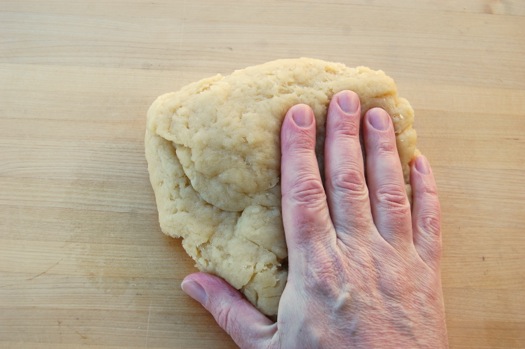Hot Water Pie Dough

The Brits make several kinds of pie crusts, all of them wetter than American-style pie crusts (though they sometimes make those too). This one is sometimes called a “hot water” crust — though “hot fat” is more accurate — and is specifically for meat pies. It contains:
7 ounces leaf lard, rendered
2 ounces water
2 ounces milk
17 ounces all-purpose flour
1/2 teaspoons salt
Start by combining the lard, water and milk in a small saucepan and set it over a low flame until the fat melts and starts to simmer.

Meanwhile put the flour in a large bowl or the bowl of a mixer fitted with a paddle (I know, but I like machines). Whisk in the salt.

With the machine running on low, add the hot liquid lard mixture. What’s so important about a hot mixture here? On the one hand the liquid blends easily into the flour this way, so you get a very even mixture, and that’s good for strength. The water and heat also causes the flour to gelate a little, and that’s good for elasticity and crack-prevention. Just the characteristics you want for something like a free-standing pork pie.

Stir until the mixture looks like this:

Then turn it out onto a board and knead it a little into a ball. You’ll notice it’s rather lumpy and greasy, but don’t worry about it. Wrap the ball in plastic and refrigerate it for several hours or overnight. Let it come completely to room temperature before you start to work with it (1-2 hours).

Now, I know there are a lot of people who like to use a dough like this when it’s just made and warm. I won’t try to step on any traditions here. What I will say is that after a good long rest in the fridge the dough will be much smoother, less greasy and easier to roll. At least for a Yank like me who’s used to working chilled doughs!
… specifically for meat pies
A point of clarification, Joe:
As you say, we make several types of pie crust in the UK. But we use the phrase ‘meat pies’ to refer to the sort of pies made by Mrs. Lovett, still available in London’s East End, along with the jellied eels, mash and parsley liquor. Mrs. Lovett’s meat pies, despite being the worst pies in London, would use something more approximating a traditional pate brisee.
My ex’s mother, unlike Mrs. Lovett, made the best meat pies you could imagine, again using a standard pate brisee recipe.
What you’re making is what we call a ‘pork pie’, regardless of whether it’s of the Melton Mowbray-type. Pork pies require a hot-water pastry, as you’re demonstrating. But they aren’t generally thought of as ‘meat pies’.
Scotch pies, which one of your previous commenters mentioned, remain a mystery to me. The pastry cases are delicious, but I’ve no idea how to reproduce them.
Very good, Philip, I shall make the correction. Thank you. It’s been a long time since I lived in Exeter and I forget these sorts of things…especially after I’ve had three pints of stout before 9:30 in the morning.
I’m curious about those Scotch pies now…I’ll have to look into them.
Cheers,
– Joe